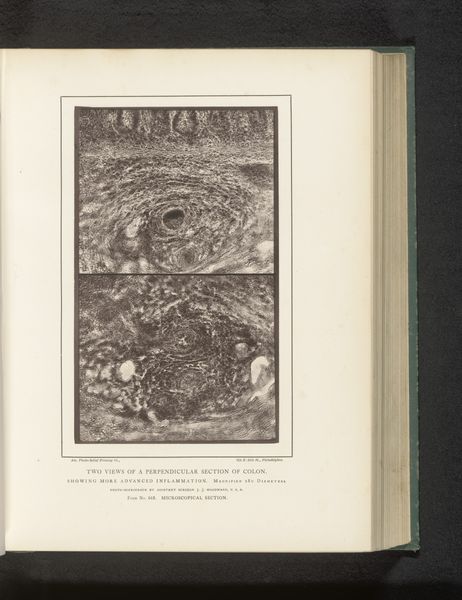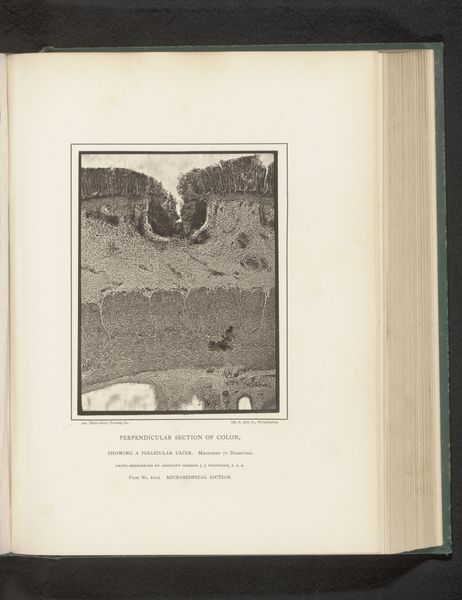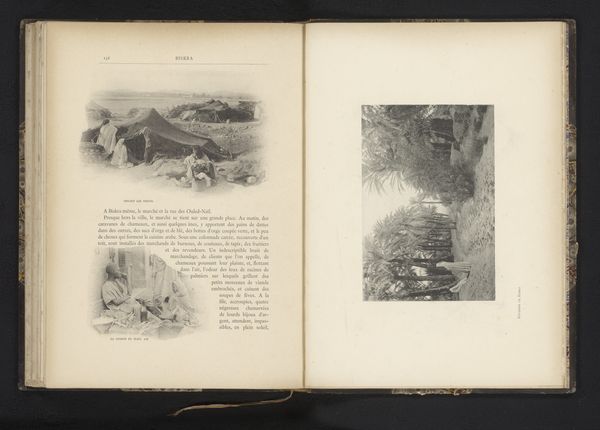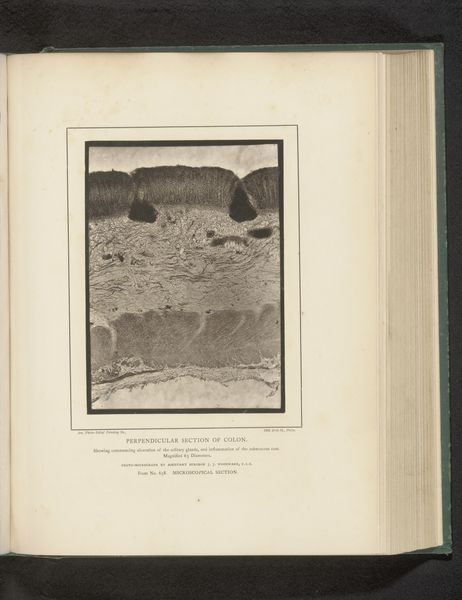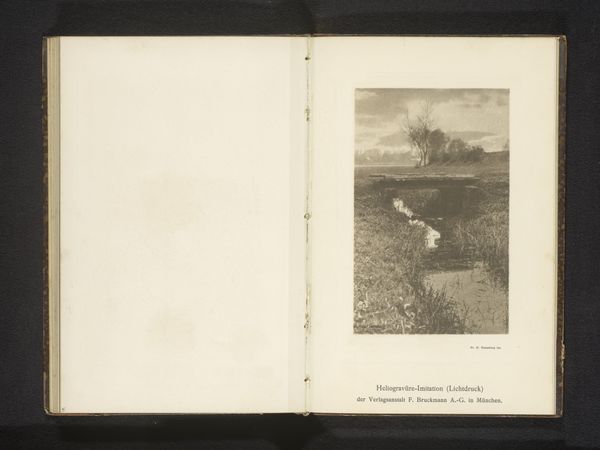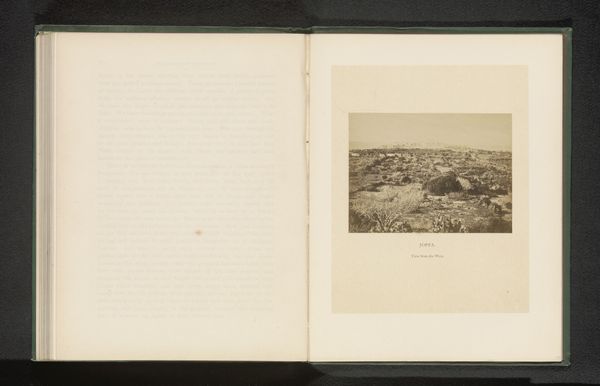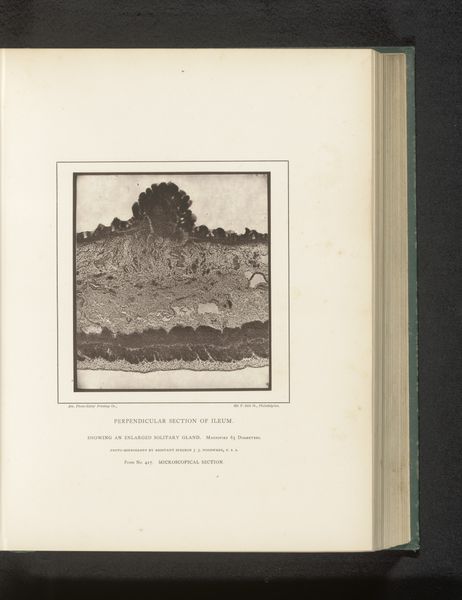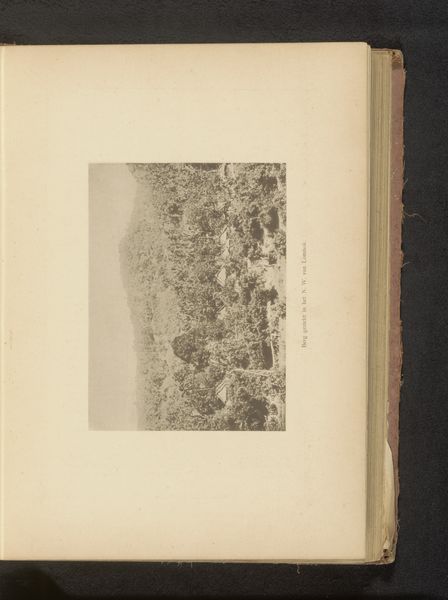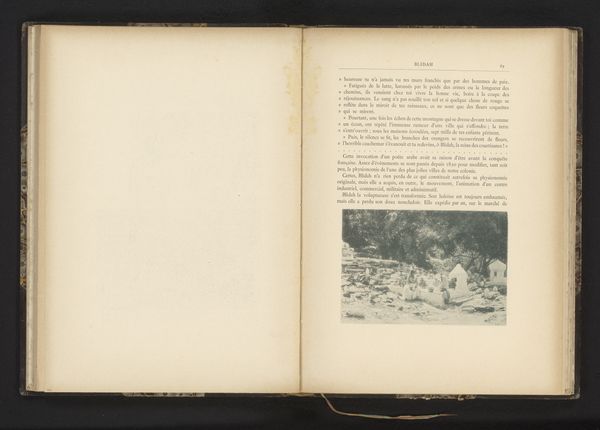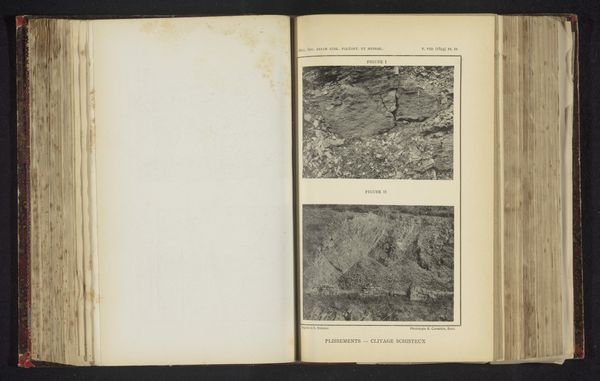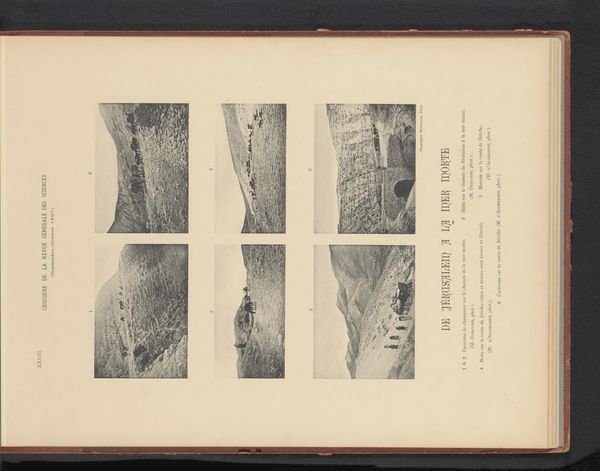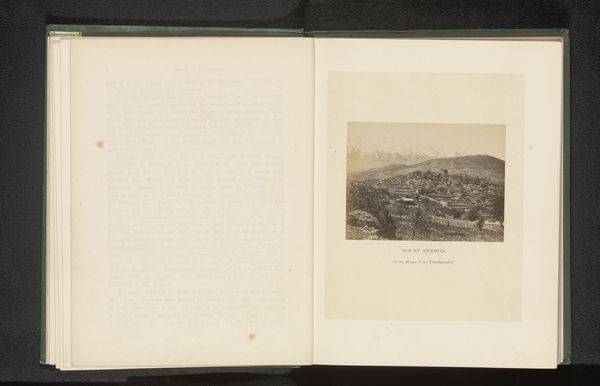
Twee vergrotingen van een ontstoken onderlaag in een stuk dikke darm before 1879
0:00
0:00
drawing, print, paper, graphite
#
drawing
#
aged paper
#
homemade paper
#
paper non-digital material
#
paperlike
# print
#
sketch book
#
paper texture
#
paper
#
personal sketchbook
#
folded paper
#
graphite
#
letter paper
#
paper medium
#
realism
Dimensions: height 195 mm, width 118 mm
Copyright: Rijks Museum: Open Domain
Curator: Here we have an intriguing print, "Twee vergrotingen van een ontstoken onderlaag in een stuk dikke darm"—or, "Two enlargements of an inflamed underlayer in a piece of large intestine." It dates to before 1879 and is credited to Joseph Janvier Woodward. Editor: My first impression is one of almost unsettling beauty. The intricate textures, like layers of sediment in rock formations, possess a strange aesthetic appeal despite the subject matter being… well, inflamed intestine. Curator: Absolutely. Woodward’s work sits at the intersection of scientific advancement and the art world's expanding field of subjects. Mid-19th century advancements in microscopy and photography presented new methods of observing and recording the world, influencing art's traditional boundaries and redefining what constituted an acceptable artistic subject. Editor: Exactly. Looking closely, you can see how the medium contributes to this dual identity. It’s graphite and print on paper; the paper itself seems aged. The labour-intensive process of creating this hyperrealistic depiction, particularly its original creation, underscores a dedication to accuracy… a tangible dedication that transcends the sterile confines of a medical textbook. Curator: The image reflects the prevailing fascination with realism at the time and is connected to larger shifts within medical institutions. They began employing artists to document and disseminate visual representations of pathology. Woodward himself served as a medical photographer, pushing these boundaries institutionally. Editor: But I wonder, what about the patients? There’s something inherently removed from a piece like this. It focuses so intently on material analysis and the craft of visual replication; one might say it’s fetishistic, with focus placed on craft, materiality and objective presentation. How was the act of collecting these samples viewed and experienced during that era? Curator: Indeed, it opens a vital discussion about ethical boundaries in medical documentation. It existed to train doctors and share observations, with little, or perhaps, no attention paid to the patient whose suffering is being magnified. This points toward unequal distributions of medical knowledge that often reproduced socio-political power. Editor: This gives the picture so much to consider regarding both beauty and suffering... Thank you! Curator: Indeed, a great start! It’s important to confront not only the beauty, but also the history and cultural moment such that the conditions of art and scientific study can come together.
Comments
No comments
Be the first to comment and join the conversation on the ultimate creative platform.

